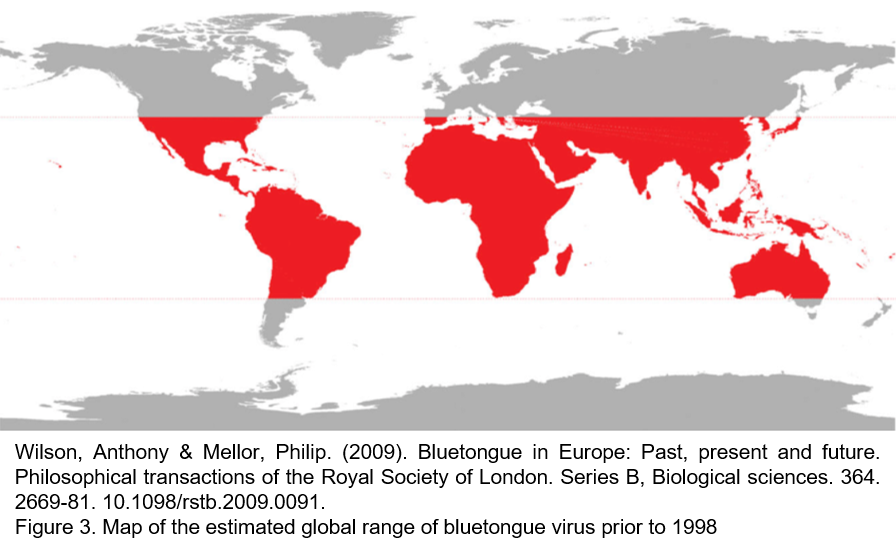- Home
- Livestock
- Animal and Plant Health Laboratories
- EU Reference Laboratory
- Bluetongue disease
History and distribution
Bluetongue was first described in South Africa, in the late nineteenth Century (Spreull, 1905), suggesting the name ‘‘Bluetongue’’ for the disease that was at the time known as malarial catarrhal fever, epizootic catarrh, beksiekte or bloutong. From the beginning, vaccination has been taken as a mean of disease control. In 1908, Theiler (1908) reported that a BTV strain, which was passed through several generations of sheep, could induce protection against BTV-associated mortality. In 1940, Mason et al. managed to culture and subsequently attenuate BTV by multiple passages on embryonated chicken eggs (ECE). Finally the vaccine production was converted from ECE to cell culture thanks to Haig et al. (1965) who described the cultivation of BTV on cell culture. During the beginning of the 20th century, BT spread in Africa and other continents.
Regarding Europe, until 1998 it was essentially bluetongue-free. Only few sporadic incursions of the disease were described before 1998 (Spain and Portugal between 1956 and 1960;Cyprus in 1977; Greece in 1979). Between 1998 and 2006, BTV strains from five different serotypes (serotypes 1, 2, 4, 9, and 16) emerged in the Mediterranean basin.
In August 2006, Dutch authorities reported the first ever case of bluetongue in Northern Europe. Most of the countries in northern and even southern Europe were affected by this strain. Next years some other BTV strains have affected to different countries in Europe, highlighting BTV1 in the Iberian peninsula in 2007, affecting also to France; BTV4 in Balkans countries in 2014 reaching central Europe, including Italy where serotypes 1, 2, 9 and 16 have been detected along these years; and the unexpected comeback of BTV8 in France in 2015. This BTV8 strain showed full homology to the strain circulating in 2007 in Northern Europe.
In all these situations, disease have been controlled thanks to extensive campaigns of vaccination using inactivated mono or bivalent vaccines against the target serotypes. In addition, since 2006, BTV live vaccine strains have been detected in Europe: BTV6 in The Netherland in 2008, BTV11 in Belgium in 2011 and BTV14 in Poland, Estonia, Lithuania and Latvia in 2012.
And finally, probably because of the massive surveillance atypical BTV serotypes different to the well-know 24 BTV serotypes, have been detected in Europe and other places around the world.
